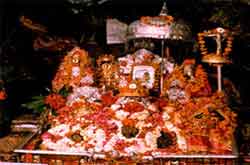Leh Sight Seeing, Monasteries and Monuments - Guide
Sightseeing - Leh Town and around
Leh town offers a number of sightseeing options for the visitors. A historic town that served as the royal capital of the Old Kingdom, it is dominated by the nine-storey palace built by King Singge Namgyal in the grand tradition of Tibetan architecture, which is said to have inspired the famous Potala in Lhasa built about half a century later.
Above the palace, on the Namgyal Tsemo hill, are the ruins of a fort, the earliest royal residence built by King Tashi Namgyal in the 16th century. The associated temples remain intact, but they are kept locked except during the morning and evening hours, when a monk from Sankar Gompa hikes up the hill to attend to the butter-lamps in front of the images.
Down in the historic bazaar, the main sites to visit are the Jo-khang, a newly built Buddhist temple, and the imposing historic mosque founded in the late 17th century standing, almost opposite. But the pleasures of Leh are not confined to the visiting of monuments and sites. For locals and visitors alike, a stroll along the main bazaar, observing the varied crowd and looking into the curio shops is an engaging experience. A particularly attractive sight is the line of women from nearby villages sitting along the edge of the footpath with baskets of fresh vegetables brought for sale. Behind the main bazaar, Chang Gali is less bustling but has interesting little shops selling curios and jewellery. Further on are the labyrinthine alleyways and piled-up houses of the old town, clustering around the foot of the palace hill. In the other direction, down the bazaar, are the Tibetan markets where one can bargain for pearls, turquoise, coral, lapis lazuli and many other kinds of semi-precious stones and jewellery, as well as carved yak-horn boxes, quaint brass locks, china or metal bowls, or any of a whole array of curios. When tired of strolling, one can step into any of several restaurants, some of them located in gardens or on the sidewalks and serve local, Tibetan, Indian and Continental cuisine.
Or one can strike off away from the bazaar, past Zangsti and the Moravian Church to the Ladakh Ecological Centre and appreciate the work being done by this NGO in applying folk technology to meet the demands of modern life in Ladakh. From here a footpath across the fields leads to Sankar Gompa, which is half an hour’s walk away.
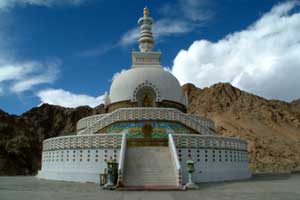 Or one can leave the main road from the bazaar near the Moravian Church and turn off to Changspa, an attractive suburb of Leh, lying below the hill on which stands the imposing Ladakh Shanti Stupa, which can be reached by a winding road. Down past the Tourist Information Centre in the old dak Bungalow, follow the Fort Road to Skara, another pretty and prosperous suburb of Leh town, and admire the earthen ramparts of Zorawar Singh's fort, now housing army barracks. This road continues onward, swinging around the village to meet the main highway near a crossroad, where the roads from Srinagar and Manali meet. A branch of this road turns southward and traverses the interior of Skara to meet the main highway near the airport, an excellent drive through the heart of the sprawling village.
Or one can leave the main road from the bazaar near the Moravian Church and turn off to Changspa, an attractive suburb of Leh, lying below the hill on which stands the imposing Ladakh Shanti Stupa, which can be reached by a winding road. Down past the Tourist Information Centre in the old dak Bungalow, follow the Fort Road to Skara, another pretty and prosperous suburb of Leh town, and admire the earthen ramparts of Zorawar Singh's fort, now housing army barracks. This road continues onward, swinging around the village to meet the main highway near a crossroad, where the roads from Srinagar and Manali meet. A branch of this road turns southward and traverses the interior of Skara to meet the main highway near the airport, an excellent drive through the heart of the sprawling village.
There are also several attractive sightseeing and walking destinations within a 10-km radius of Leh. Sabu, a charming village with a small gompa, nestles between two minor spurs of the Ladakh range, about 9 kms away from the town. In the same direction, but nearer town is Choglamsar, with the Tibetan refugee settlement including a children’s village, a handicrafts centre devoted largely to carpet weaving and the Dalai Lama's prayer-ground, Jiva-tsal. And in the opposite direction, about 8 kms on the Srinagar road, is the turning for Spituk village and its imposing monastery.
Monasteries - The central area of Ladakh has the greatest concentration of major Buddhist monasteries or gompas. Of the twelve situated on or near the Indus, the oldest monastery is that of Lamayuru, which is believed to have been a sacred site for the pre-Buddhist religion known as Bon.
The monasteries of Phiyang, Hemis and Chemrey were all founded under the direct patronage of members of the ruling Namgyal dynasty. Phiyang represents an act of penance by the 16th century King Tashi Namgyal for the violence and treachery by which he reached the throne. Hemis monastery, together with that of Hanle near the Tibetan border, was established at the instance of King Singge Namgyal, while his widow founded Chemrey as a posthumous act of merit for him. Stakna, dating from a slightly earlier period, was endowed by the Namgyal kings at various times. All these belong to the Red Hat (Kargyud-Pa) sect of Tibetan monasticism.
The reformist Gelugs-pa, or Yellow-Hat sect, is also well represented in central Ladakh by the monasteries of Thiksey, Likir, Ri-dzong and Spituk, the last of which has branch monasteries at Stok, Sabu and Sankar. Ri-dzong, situated a few kilometres up a side-valley from Uley-Tokpo, was founded only a century and a quarter ago by a devout layman-turned-lama, with the purpose of following the strict monastic rules of the Gelugs-pa sect.
Tak-thok and Matho gompas represent the smaller but much older Nying-ma-pa and Saskya-pa monastic sects respectively. Tak-thok, situated at the foot of the Chang-la pass, incorporates one of the many caves in the Himalayas where the Indian Buddhist apostle Padmasambhava is said to have rested and meditated on his journey to Tibet. Matho gompa is famous for its festival of the oracles, which is held early in the year, usually in the first half of March.
But the jewel among Ladakh's monastic foundations is Alchi. Abandoned centuries ago as a place of active worship, it has been lovingly maintained by the monks of Likir, the nearest functioning monastery. Known as Chos-kor, or religious enclave, it comprises five temples, the richest in paintings and images being the Du-khang (assembly hall) and the three-storey Sum-tsek. Its murals, dating from the 11th and 12th centuries, pre-date the Tibetan style of painting seen in all the other gompas of the region. Some of them are reminiscent of the paintings of the Ajanta Caves and are presumed to be almost the sole survivors (along with some in Phugtal gompa in Zanskar, and Tabo gompa in Spiti) of the Buddhist style prevailing in Kashmir during the first millennium AD.
Note for visitors to Monasteries - The monasteries of Ladakh are the fountainhead of Buddhist religion and culture. They are also the repositories of the region’s centuries old artistic and cultural heritage. Visitors are advised to respect their sanctity and appreciate their heritage importance.
Shoes may have to be removed before entering some of the temples, while ladies are not allowed to enter the Gon-Khang or the room dedicated to the guardian divinities. Smoking is anathema to the monastic atmosphere, while loud action and improper dress may disturb the tranquil ambience characteristic of such places of worship.
Most of the region’s principal monasteries are open throughout the day and a caretaker lama is there to show visitors around. Some of the less visited establishments have special opening hours as in the case of the Namgyal Tsemo, Shey Palace etc. Check the timings in the Tourist Office before proceeding to these places. Also, most monasteries charge a small entrance fee.
Monuments - Sightseeing of the historic monuments and major Buddhist gompas (monasteries) are the main attractions of Ladakh.
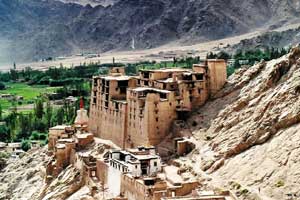 The Indus Valley, particularly from Upshi down to Khalatse, which is the region's historic heartland, is dotted with all the major sites connected with the former kingdom's dynastic history, starting with Leh, the capital, since the building of its nine-storey Leh palace in the early 17th century.
The Indus Valley, particularly from Upshi down to Khalatse, which is the region's historic heartland, is dotted with all the major sites connected with the former kingdom's dynastic history, starting with Leh, the capital, since the building of its nine-storey Leh palace in the early 17th century.
A few kilometres up the Indus is Shey Palace, the most ancient capital, with its palace and temples. Down river, Basgo, right on the road, and Tingmosgang, a short distance up a side-valley, both served as royal capitals when the Old Kingdom was temporarily divided into two parts in the 15th century. Both these places have the remains of forts and temples dating from the period of their brief glory. Just across the river from Leh lies Stok, the village with which the deposed royal family was compensated for the loss of the throne. Stok Palace, where the royal family now lives, houses a museum of artefacts associated with the dynasty.

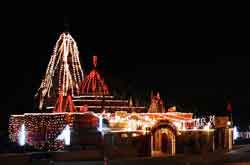
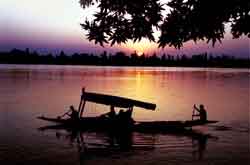
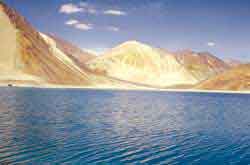
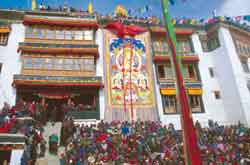
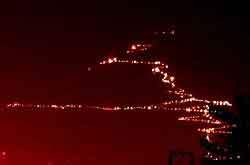
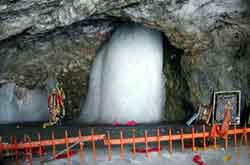
 Or one can leave the main road from the bazaar near the Moravian Church and turn off to Changspa, an attractive suburb of Leh, lying below the hill on which stands the imposing Ladakh Shanti Stupa, which can be reached by a winding road. Down past the Tourist Information Centre in the old dak Bungalow, follow the Fort Road to Skara, another pretty and prosperous suburb of Leh town, and admire the earthen ramparts of Zorawar Singh's fort, now housing army barracks. This road continues onward, swinging around the village to meet the main highway near a crossroad, where the roads from Srinagar and Manali meet. A branch of this road turns southward and traverses the interior of Skara to meet the main highway near the airport, an excellent drive through the heart of the sprawling village.
Or one can leave the main road from the bazaar near the Moravian Church and turn off to Changspa, an attractive suburb of Leh, lying below the hill on which stands the imposing Ladakh Shanti Stupa, which can be reached by a winding road. Down past the Tourist Information Centre in the old dak Bungalow, follow the Fort Road to Skara, another pretty and prosperous suburb of Leh town, and admire the earthen ramparts of Zorawar Singh's fort, now housing army barracks. This road continues onward, swinging around the village to meet the main highway near a crossroad, where the roads from Srinagar and Manali meet. A branch of this road turns southward and traverses the interior of Skara to meet the main highway near the airport, an excellent drive through the heart of the sprawling village. The Indus Valley, particularly from Upshi down to Khalatse, which is the region's historic heartland, is dotted with all the major sites connected with the former kingdom's dynastic history, starting with Leh, the capital, since the building of its nine-storey Leh palace in the early 17th century.
The Indus Valley, particularly from Upshi down to Khalatse, which is the region's historic heartland, is dotted with all the major sites connected with the former kingdom's dynastic history, starting with Leh, the capital, since the building of its nine-storey Leh palace in the early 17th century.